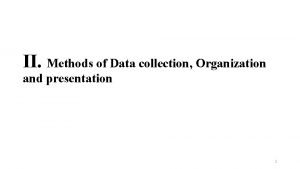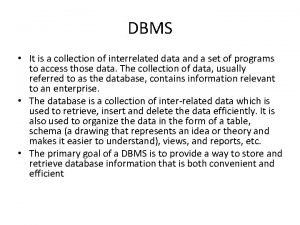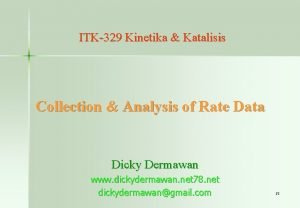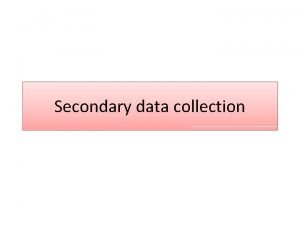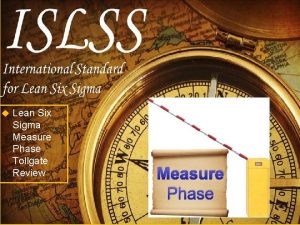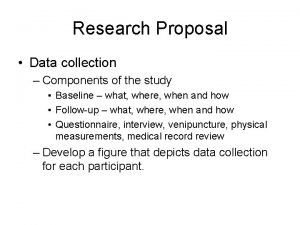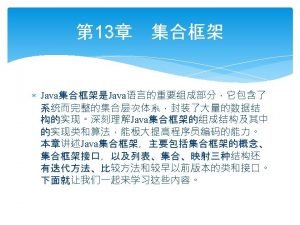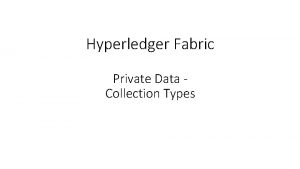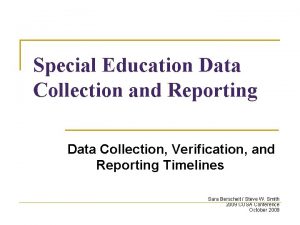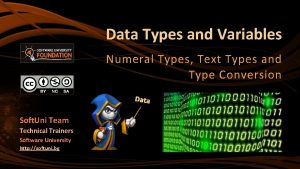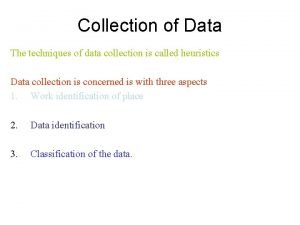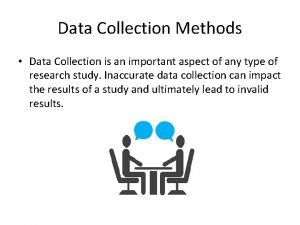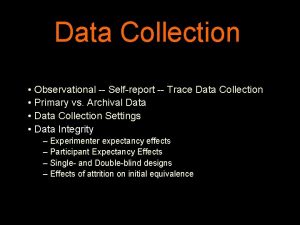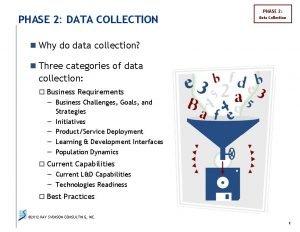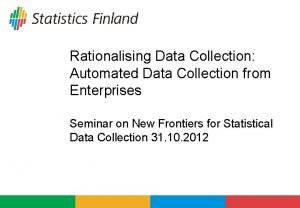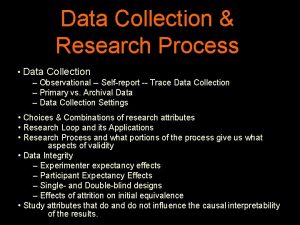Data and Data Collection Fundamentally2 types of data



















- Slides: 19

Data and Data Collection Fundamentally--2 types of data Quantitative – Numbers, tests, counting, measuring Qualitative – Words, images, observations, conversations, photographs

Data Collection Techniques Observations, Tests, Surveys, Document analysis (the research literature)

Quantitative Methods Experiment: Research situation with at least one independent variable, which is manipulated by the researcher

Independent Variable: The variable in the study under consideration. The cause for the outcome for the study. Dependent Variable: The variable being affected by the independent variable. The effect of the study y = f(x) Which is which here?

Key Factors for High Quality Experimental Design Data should not be contaminated by poor measurement or errors in procedure. Eliminate confounding variables from study or minimize effects on variables. Representativeness: Does your sample represent the population you are studying? Must use random sample techniques.

What Makes a Good Quantitative Research Design? 4 Key Elements 1. Freedom from Bias 2. Freedom from Confounding 3. Control of Extraneous Variables 4. Statistical Precision to Test Hypothesis

Bias: When observations favor some individuals in the population over others. Confounding: When the effects of two or more variables cannot be separated. Extraneous Variables: Any variable that has an effect on the dependent variable. Need to identify and minimize these variables. e. g. , Erosion potential as a function of clay content. rainfall intensity, vegetation & duration would be considered extraneous variables.

Precision versus accuracy "Precise" means sharply defined or measured. "Accurate" means truthful or correct.

Both Accurate and Precise Not accurate But precise Accurate Not precise Neither accurate nor precise

Interpreting Results of Experiments Goal of research is to draw conclusions. What did the study mean? What, if any, is the cause and effect of the outcome?

Introduction to Sampling is the problem of accurately acquiring the necessary data in order to form a representative view of the problem. This is much more difficult to do than is generally realized.

Overall Methodology: * * * * State the objectives of the survey Define the target population Define the data to be collected Define the variables to be determined Define the required precision & accuracy Define the measurement `instrument' Define the sample size & sampling method, then select the sample

Sampling Distributions: When you form a sample you often show it by a plotted distribution known as a histogram. A histogram is the distribution of frequency of occurrence of a certain variable within a specified range. NOT A BAR GRAPH WHICH LOOKS VERY SIMILAR



Interpreting quantitative findings Descriptive Statistics : Mean, median, mode, frequencies Error analyses

Mean • In science the term mean is really the arithmetic mean • Given by the equation n 1 • X = /n xi i=1 Or more simply put, the sum of values divided by the number of values summed

Median • Consider the set • 1, 1, 2, 2, 3, 6, 7, 11, 13, 14, 16, 19 – In this case there are 13 values so the median is the middle value, or (n+1) / 2 – (13+1) /2 = 7 • Consider the set • 1, 1, 2, 2, 3, 6, 7, 11, 13, 14, 16 – In the second case, the mean of the two middle values is the median or (n+1) /2 (12 + 1) / 2 = 6. 5 ~ (6+7) / 2 = 6. 5 Or more simply put the mid value separating all values in the upper 1/2 of the values from those in the lower half of the values

Mode The most frequent value in a data set • Consider the set • 1, 1, 2, 2, 3, 6, 11, 11, 13, 14, 16, 19 – In this case the mode is 1 because it is the most common value • There may be cases where there are more than one mode as in this case • Consider the set • 1, 1, 2, 2, 3, 6, 11, 11, 13, 14, 16, 19 – In this case there are two modes (bimodal) : 1 and 11 because both occur 4 times in the data set.
 Landsat collection 1 vs collection 2
Landsat collection 1 vs collection 2 Documentary collection definition
Documentary collection definition Types of data collection methods
Types of data collection methods Data collection procedure and data analysis
Data collection procedure and data analysis The terms external secondary data and syndicated
The terms external secondary data and syndicated Types of cash collection system
Types of cash collection system Data collection organization and presentation
Data collection organization and presentation Database is a collection of interrelated data
Database is a collection of interrelated data Collection and analysis of rate data
Collection and analysis of rate data Data entry in gis
Data entry in gis Data collection management and analysis
Data collection management and analysis Data raw facts and figures
Data raw facts and figures Primary data means
Primary data means Site:slidetodoc.com
Site:slidetodoc.com Example of qualitative vs quantitative
Example of qualitative vs quantitative Tollgate review
Tollgate review Identify priority improvement areas
Identify priority improvement areas Finding answers through data collection
Finding answers through data collection Sampoorna school
Sampoorna school Data collection procedure in research proposal
Data collection procedure in research proposal






